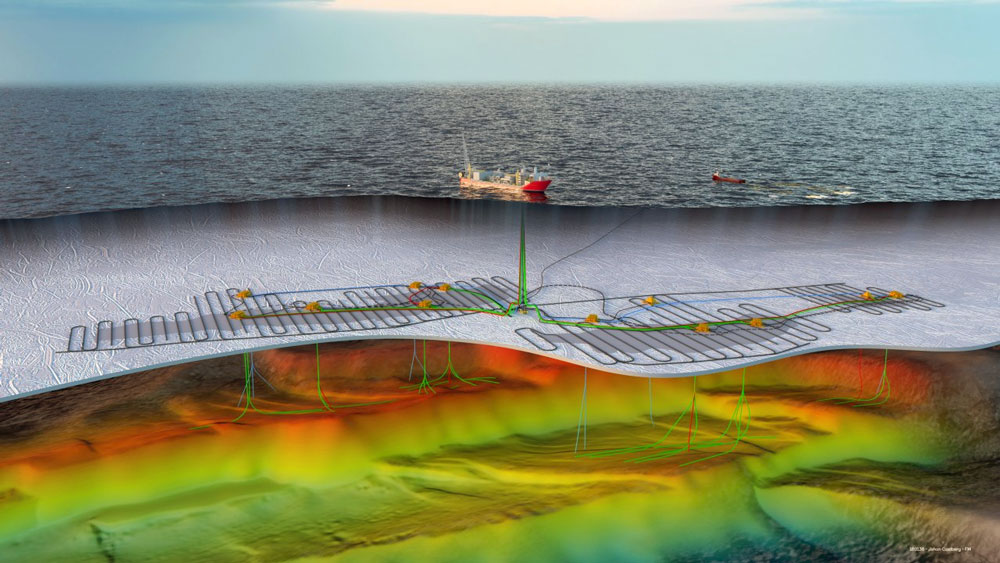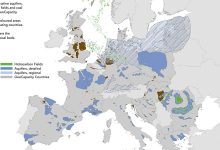PRM helping to improve recovery from the Johan Castberg field
Equinor to hit 60% through IOR methods
Digital technology developed in Norway will help improve recovery from the Johan Castberg field in the Barents Sea. Equinor has awarded Alcatel Submarine Networks a contract for permanent reservoir monitoring (PRM), which in turn has signed a letter of intent with Nexans Norway AS for delivery of subsea cable.
“PRM is a central element of the digital strategy for Johan Castberg and will be an important tool in improving the Johan Castberg recovery rate,” says Johan Castberg Project Director Knut Gjertsen.
The technology is developed in Norway, and the contract is awarded by exercising an option in the framework agreement on PRM that we entered into with Alcatel when signing a corresponding contract for the North Sea Johan Sverdrup field in January this year. Johan Castberg and Johan Sverdrup will share the PRM project management, leading to both synergies and savings. Johan Sverdrup and Johan Castberg are the first fields in the world to install this tool before production start.
Nexans Norway AS is a subcontractor to ASN on the Johan Castberg PRM project. They will manufacture the backbone cable network and inter-station cable at their facilities in Rognan, Norway. The supply will include more than 200 km of subsea cable. This is an important contract which strengthens Equinor’s presence in the north. Seismic stations will be incorporated into the cables at ASN’s facility in Calais, France.
Equinor’s fields on NCS has a world class recovery rate, and the company expects the current portfolio of producing and sanctioned fields to achieve 50% recovery. Equinor has an ambition to hit 60% through IOR-initiatives for their oil fields.
Fibre-optic monitoring – a tool for digitalisation and improved recovery
PRM implies that seismic sensors are installed permanently on the seabed, providing better images of reservoir changes at a more frequent rate. Both the amount and not least the quality of the information generated from this system will be central in Equinor’s plans for use of digital technology at the Johan Castberg field. This kind of data has a large potential in relation to visualisation, modelling and gradually also predictive analyses. More than 200 kilometres of fibre-optic seismic cables and 3,700 sensors will be spread on the seabed at the Johan Castberg field. The cables will start sending images before the field starts up in 2022, providing a basis and information about the reservoirs before production start. This will increase the well placement precision and help ‘control’ production and injection, says Benedicte Nordang, Subsea Manager for Johan Castberg.
Estimated recoverable reserves for Johan Castberg is 450-650 million barrels. Planned start-up is 2022.
The Johan Castberg partnership consists of Equinor (operator 50%), Eni Norge (30%) and Petoro (20%).
Johan Castberg field
The Johan Castberg (formerly Skrugard) field is situated approximately 100 kilometres north of the Snøhvit-field in the Barents Sea. The Johan Castberg field development project’s resource base consists of the three oil discoveries Skrugard, Havis and Drivis, located in PL 532.
To achieve profitability in the project after the fall in the oil price in 2014-15, Statoil and the partners had to change the design concept and develop new solutions in order to be able to carry out the development.
The field will be developed with an FPSO+ production vessel with additional subsea soluitions. Compared with the original solution, costs have been reduced from approximately 100 billion NOK to 50 billion. At sea level, the FPSO will be visible—but it is under water that the true size of the field is seen. Castberg is a large subsea field, and is key to the possible further development and infrastructure in the Barents Sea.
The Johan Castberg licence will also spend more time investigating the possibility of realising a stand-alone oil terminal on Veidnes. An onshore terminal could also be an alternative in combination with offshore oil offloading. However, there are significant differences in costs between a concept based on bringing the oil to shore in a pipeline and a concept based on offshore oil offloading. Statoil and its partners will therefore continue to work to optimise opportunities in the area and the timing of project activities. An investment decision on a possible terminal will be made in 2019.
Johan Castberg is a breakthrough in unexplored areas where we must interact with other interests, such as the fisheries. At the same time, this is a development which will have ripple effects including an impact on technology and expertise building in the supplier industry—particularly in the north.
- The Statoil-operated discoveries Skrugard from 2011, Havis from 2012 and Drivis from 2014 comprise what is now the Johan Castberg project.
- The proven volumes in Johan Castberg are estimated at between 400 and 650 million barrels of oil
- Location: Situated approx. 100 kilometres north of the Snøhvit-field in the Barents Sea in blocks 7219/9 and 7220/4,5,7, about 100 km north of the Snøhvit field, 150 km from Goliat and nearly 240 km from Melkøya. The water depth is 360-390 meters, 7 km between Skrugard and Havis
- The discoveries: Skrugard April 2011, Havis January 2012, Drivis May 2014







